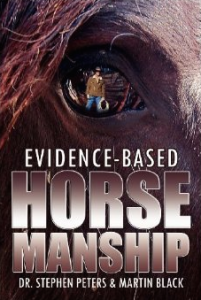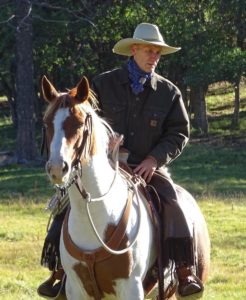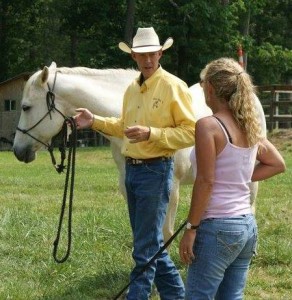If you’ve ever sought a second medical opinion or gotten more than one estimate for a home repair, you know that each vested party has a different take on things.
Working with horses, every trainer has a distinctive manner of looking at the horse, of training the horse, and of conveying his knowledge to the audience.
The horse, however, has the facts. Its movements and behaviors are results of the horse acting and reacting to its world as only the horse understands. Thankfully, science is helping us humans have a better appreciation for just how and what our horses are taking in and processing. Science can confirm or refute that what we’re doing is appropriate. Research supports, for instance:
— letting horses live in a group and live where they can move about
— solely offering hay and grass without grain or other condensed food
— when riding, letting a horse have free movement of its head for better balance and vision.
 These topics and others have been discussed by Dr. Steve Peters in Evidence-Based Horsemanship, the book he co-authored with Martin Black. Increasingly, clinicians are gravitating to the understandings Peters and Black pioneered. The more the merrier, say the pair. As they write in the book:
These topics and others have been discussed by Dr. Steve Peters in Evidence-Based Horsemanship, the book he co-authored with Martin Black. Increasingly, clinicians are gravitating to the understandings Peters and Black pioneered. The more the merrier, say the pair. As they write in the book:
EBH is an approach that continually evolves as our knowledge base grows. Finding that one has done something the wrong way may be just as valuable as getting it right if it refines the knowledge base so others do not have to struggle with a similar wrong turn.
This approach is not concerned with arguing over a school of thought or following one trainer over another. Egos, persuasive salespeople, and charismatic personalities would have little relevance to EBH.
With that philosophy in mind, the EBH world is indeed growing to incorporate other clinicians who also have an appreciation for the science. Years ago, trainers at the Horsemen’s Re-Union (including Thomas Saunders V, Bryan Neubert, Chris Cox, and Craig Cameron) absorbed EBH presentations. Said Saunders at the time, “it’s something we were seeing, but we lacked the vernacular for it.”
More recently, West Taylor, who works almost exclusively with wild horses, hosted Dr. Peters for a weekend event in St. George, Utah. This week, Jim Thomas will host Peters at the Healthy Horse weekend in North Carolina.
As the book states:
There is room for everyone under this umbrella to educate themselves by asking:
“What does our current scientific knowledge of the horse, when applied and empirically observed, show me about getting the best outcomes possible for me and the horse?
Does it work?
What’s the proof?
What is it based on?”


What year was EBH published, and are there updated being published anywhere on a regular bases ? Thank you for the article and information !
Hi Mavis,
The book was published in 2011. Updates mostly occur in BestHorsePractices articles and via seminar presentations by Dr. Steve Peters and Mr. Black. Please feel free to subscribe to our newsletter in order to stay current. Thanks for your interest.